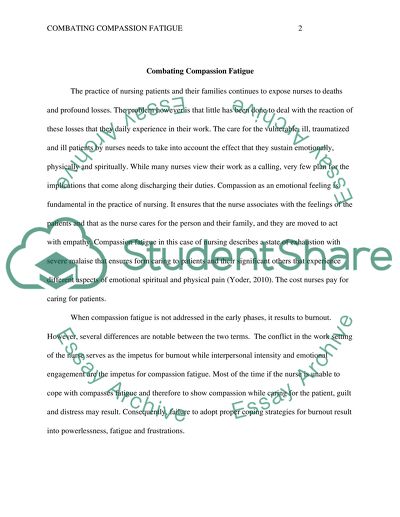Cite this document
(“Combating Compassion Fatigue Essay Example | Topics and Well Written Essays - 1250 words - 3”, n.d.)
Retrieved from https://studentshare.org/nursing/1656358-combating-compassion-fatigue
Retrieved from https://studentshare.org/nursing/1656358-combating-compassion-fatigue
(Combating Compassion Fatigue Essay Example | Topics and Well Written Essays - 1250 Words - 3)
https://studentshare.org/nursing/1656358-combating-compassion-fatigue.
https://studentshare.org/nursing/1656358-combating-compassion-fatigue.
“Combating Compassion Fatigue Essay Example | Topics and Well Written Essays - 1250 Words - 3”, n.d. https://studentshare.org/nursing/1656358-combating-compassion-fatigue.


